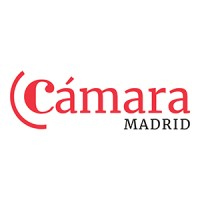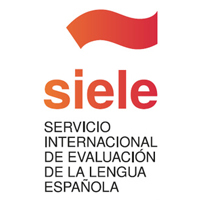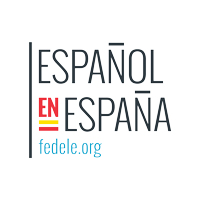It’s that time of year again when we get ready here in Spain to celebrate la Semana Santa (Easter week)
Out come the torrijas (fried sweet bread desserts), the nazarenos (people dressed in traditional Easter costumes) and everyone starts preparing for the procesiones (parades) which take place in every town and city across the country. As Spain is over 70% Catholic, Pascua (Easter) is actually the most widely celebrated holiday here. So, let’s take a closer look at some of the history, traditions and cuisine of this interesting time.
History of Easter in Spain
If you don’t know, Semana Santa (Easter week) is all about celebrating la muerte (the death) and subsequent resurección (resurrection) of Jesus Christ. According to religion, he died on Viernes Santo (Good Friday) and came back to life on Domingo de Pascua (Easter Sunday). These events have been celebrated in the Christian world in various ways pretty much ever since.
In Spain, there are recorded procesiones (parades) dating back to el siglo XIII (the 13th century) in the city of Salamanca. However, generally speaking, the traditions in their current forms mostly began in el siglo XVI (the 16th century) when the Church decided they needed a better way to teach the story of la Pasión de Cristo (the Passion of Christ) which includes la última cena (the last supper), la crucifixión (the crucifixion) and la resurreción (the resurrection) of Jesus. As such, the idea of parading religious figures through the streets in an act of collective worship gained popularity and eventually spread throughout the whole country.
What happens at Easter?
Semana Santa (Easter week) officially starts with el Domingo de Ramos (Palm Sunday) when people take ramas de palma o olivo (palm or olive branches) to their church to be blessed by el sacerdote (the priest). The idea behind this is to commemorate la entrada triunfal en Jerusalén (the entry into Jerusalem) by Jesus where he was offered palm branches as a welcome gift by the people. You’ll see people walking through the streets carrying their ramas (branches) on their way to la misa (mass). It’s common to see both plain and decorated branches and some people tie them to their terraza (balcony) as well.
Once the week has kicked off with this offering, then we start to see the procesiones (parades) which may begin on the same Sunday and even on the Saturday before as well. These parades happen every night of la Semana Santa (Easter Week), and cities like Sevilla (Seville) in the south and Valladolid in the north have had their Easter weeks declared Fiesta de interés turístico internacional (Festival of International Tourism Interest) by the Spanish government due to how famous they are. Here in Madrid, there are a total of 26 parades during the week so there’s plenty to see when you’re studying Spanish in the capital!
During these parades, you’ll see very large pasos (Easter float – like a very large platform) which carry the esculturas religiosas (religious sculptures or figures) representing the different elements of the Easter story. These are very big, heavy structures which are carried through the streets by los costaleros (the people supporting the platform) who are hidden from public view by the fabrics draped over the bottom of the paso itself. This gives the illusion that the figures are floating through the streets and so adds to the curiosity of the whole event.
Each of the procesiones de Semana Santa (Easter parades) is made up of multiple pasos (Easter floats) which are owned or at least looked after by many different cofradías (brotherhoods). The cofradías are groups of religious faithful who work together during various events and promote the church they belong to. It’s thought that the origins of such groups may have been to do with worker rights, as many of them were based around a particular oficio (profession), although this isn’t really the case nowadays. The members of these groups parade in traditional dress – un capirote (big hood) which is a very tall, conical hat which covers the face and has two eyeholes. Each cofradía (brotherhood) has a different colour with a variety of decoration to identify themselves as belonging to that group during the parades.
These events continue throughout the week, and the larger ones happen on Jueves Santo (Maundy Thursday), Viernes Santo (Good Friday), Sábado Santo (Holy Saturday) and Domingo De Resurreción (Easter Sunday). When you come to learn Spanish here in Madrid, we definitely recommend going to watch some of these parades as they’re absolutely fascinating and a great way to immerse yourself in authentic Spanish culture. You don’t have to be religious to enjoy the spectacle of Semana Santa as it’s something that everyone here gets involved in.
Easter foods
Apart from all of the actual religious observance, Semana Santa has its own set of tasty treats for you to enjoy while you’re taking a Spanish course in Madrid.
One of the most typical things you’ll find during this time are torrijas. These are made from a type of pan (bread) which is soaked in leche (milk), fried in aceite (oil) and flavoured with azúcar (sugar), miel (honey) and canela (cinnamon). Sounds delicious, right? People go mad for these desserts – I’m particularly addicted to them and my suegra (mother-in-law) makes the best torrijas! Once you’ve tried one, you’ll be wanting more. They were first documented in el siglo XV and their association with Pascua (Easter) comes from them being a way to use up leftover bread from the time of Cuaresma (Lent). You’ll find them absolutely everywhere around March and April, so make sure you try a few!
Apart from sugary delights, there are also a few platos típicos (typical dishes) which are generally only eaten around Easter. For example, potaje de vigilia (Vigil stew/broth) is a type of stew made mainly from bacalao (cod), garbanzos (chickpeas) and espinacas (spinach) along with huevo duro (boiled egg) and various seasonings. It’s eaten on Fridays during la Cuaresma (Lent) and, unlike lots of Spanish food, doesn’t contain any meat as it’s forbidden to eat meat during Lent according to religious tradition. Potaje de vigilia is delicious and best served with a big chunk of pan (bread) to mojar (dip – literally to wet) in the tasty broth – lovely!
Easter in Spain is one of the most important traditions of the year, so you definitely need to check it out when you come to Madrid to study Spanish on one of our courses here at Hablamos. What are you waiting for – sign up today!





